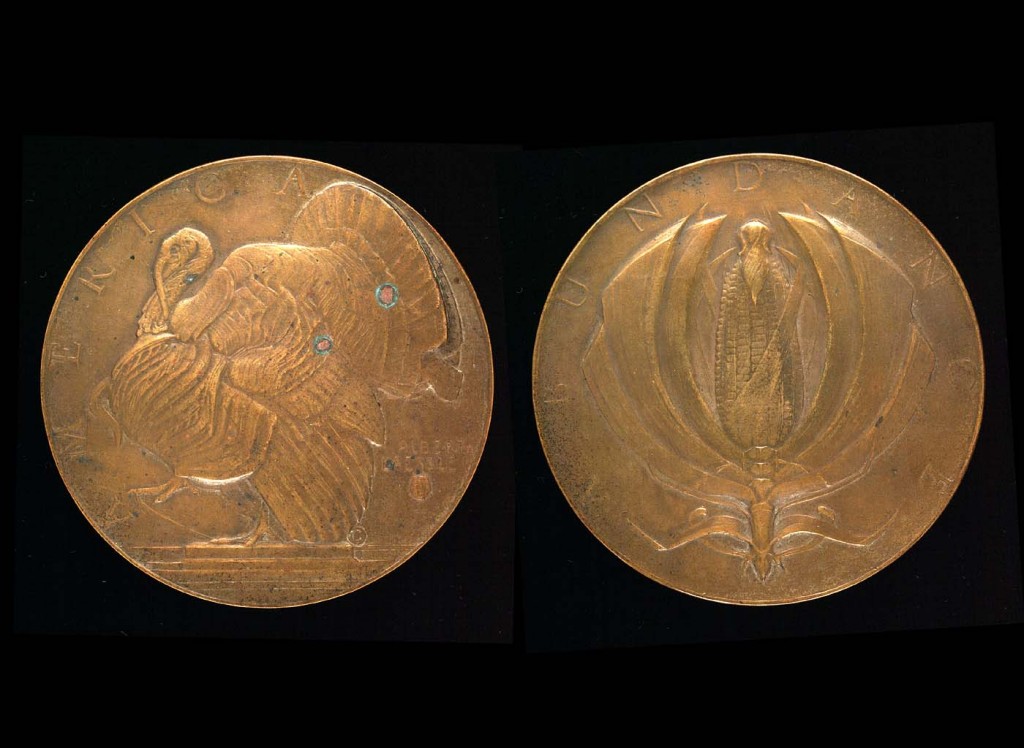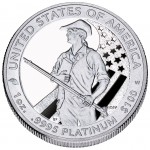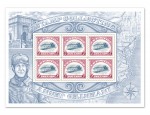Weekly World Numismatic News for November 29, 2020
 I forgot the comedian’s name who had about depicting the cost of things in old movies. He explained that in old western movies, a man would dismount from his horse, amble up to the bar for a drink and throw down a coin for the libation. It did not matter what the drink cost. The drinker paid one large silver coin with a loud ping.
I forgot the comedian’s name who had about depicting the cost of things in old movies. He explained that in old western movies, a man would dismount from his horse, amble up to the bar for a drink and throw down a coin for the libation. It did not matter what the drink cost. The drinker paid one large silver coin with a loud ping.
The silver dollar was the coin of the realm for the old west. It was hard money to go along with the hard times. Paper money had questionable value and could not be as trusted as a silver coin. Settling in the territories and building new lives on untamed land was risky and the feel of a metal coin was less risky than paper.
After the last Peace Dollar was struck in 1935, the U.S. Mint never minted another silver dollar for circulation again. The return of the large dollar coin came in 1971 with the copper-nickel Eisenhower Dollar. The coin was popular as a curiosity but waned until the bicentennial redesign. After the bicentennial, it seemed that the dollar coin had returned.
Then came the biggest failure of the modern coin era: Susan B. Anthony dollar.
Although the idea to honor suffragette Susan B. Anthony was sound, the rest of the coin’s design led to the long term rejection of dollar coins. The coin was smaller than the Eisenhower dollar but only slightly larger than a quarter. It was made using copper-nickel clad planchette and reeded edges that made it too similar to a quarter. Rather than being an 11- or 12-sided coin, it was round with a design that included a border to simulate the edges.
Many people tried to embrace the coin, but the confusion with the quarter was too costly. As college students, we abandoned the coin early. When the coin was spent as a quarter, we poor college students lost 75-cents per transaction or three cups of late-night coffee from the vending machine.
The introduction of the Sacagawea dollar in 1999 saw the basic planchet changed to fix all of the problems found in the Susie B. With the color change and the smooth edges, it was unlikely to be confused for another coin. Unfortunately, the Susie B. was such a failure that the coin has never gained traction in commerce.
The dollar coin programs of the 21st century have not been appreciated the way they should be. What better way to celebrate the republic’s longevity and the concept of the peaceful transfer of power than a celebration of the presidents? Since 2009, the coins celebrate the history of the Native American contributions with underappreciated designs.
Although some complain about a new series of coins, the American Innovation Dollar celebrates great inventions that have made life better. The coin is a better representation of the American spirit than a static design.
But there is no incentive to wean the country off of the paper dollar and embrace the coin. Even though Congress passed the laws to create these coins, they do not have the intestinal fortitude to eliminate the dollar note, as almost every first-world country has done. Instead, they pass laws creating coin series and wonder why they are not successful.
One of their alleged reason is that people do not want to change. But they are asking people who give specious reasons for resisting as “would you rather carry around 20 dollar coins or 20 $1 bills.” My response is, “neither. I would rather carry a $20 bill!”
It would be nice to join the civilized world and remove the $1 Federal Reserve Note from circulation. The coins have such exciting designs that they deserve circulation. Maybe someday the do-nothing Congress will figure it out–likely when its members’ average age dips below 60 years old!
And now the news…
 → Read more at lostcoastoutpost.com
→ Read more at lostcoastoutpost.com
 → Read more at nytimes.com
→ Read more at nytimes.com
 → Read more at worthingherald.co.uk
→ Read more at worthingherald.co.uk
 → Read more at wltx.com
→ Read more at wltx.com
 → Read more at newsweek.com
→ Read more at newsweek.com
U.S. Mint does Black Friday!
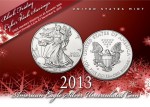 As we welcome Black Friday and the holiday shopping season, the U.S. Mint is getting into the act by bringing back Free Standard Shipping. Buy whatever your want from the U.S. Mint online catalog and get free standard shipping until December 6, 2013.
As we welcome Black Friday and the holiday shopping season, the U.S. Mint is getting into the act by bringing back Free Standard Shipping. Buy whatever your want from the U.S. Mint online catalog and get free standard shipping until December 6, 2013.
According to sources, the free shipping promotion in September went very well bringing increased sales volume to the U.S. Mint. Since shipping and packaging are the few aspects that the U.S. Mint can control on its own, they are going to use whatever it takes to get noticed to bring collectors and gift buyers to their site.
They got me. I am going to be ordering my 2013 Presidential Dollar First Day Covers with the free shipping. I have to keep my collection up to date!
Unfortunately, the Teddy Roosevelt Coins and Chronicles set will not be released until December 17, after the free shipping sale.
Thanksgiving 2014
After arriving in the New World in 1620, the Pilgrims celebrated their first harvest in 1621. The three-day even was attended by 53 Pilgrims and 90 Native Americans that lasted three days. The tradition of giving thanks for successes was a tradition that the Pilgrims brought with them from England. This three-day celebration in 1621 is considered the first Thanksgiving.
Thanksgiving was celebrated during many different times within the colonies, mainly to give thanks for something that was honorable to the colony or the locality that observed the celebration. The first national recognition of a Thanksgiving celebration came when General George Washington declared December 1777 as Thanksgiving honoring the defeat of the British at Saratoga. As President, George Washington declared the first national Thanksgiving celebration on November 26, 1789. The only other president to issue a Thanksgiving proclamation was President James Madison. From then, it was up to the individual states to declare a Thanksgiving holiday.
As part of his attempt to maintain the union, President Abraham Lincoln issued a proclamation that made Thanksgiving Day a national annual event on the last Thursday in November beginning in 1863.
Thanksgiving remained the last Thursday of November until 1939 when he declared Thanksgiving to be on the fourth Thursday of the month to give merchants more time to sell good during the Christmas shopping season. Congress passed a joint resolution in 1942 fixing Thanksgiving to the fourth Thursday of November.
In 1947, the National Turkey Federation has provided the President of the United State with one live turkey and two dressed turkeys. President Harry Truman is credited with pardoning the first turkey in 1947 but it did not become a tradition until President Ronald Reagan started in 1987 and continued by President George H.W. Bush in 1989. Since 1989, the pardoned turkeys have lived the rest of their lives at Frying Pan Park in Herndon, Virginia. Those pardoned by President Obama have gone to live at George and Martha’s old place in Mount Vernon, Virginia.
Return of the Poll: Expanding the U.S. Mint catalog
Let’s pretend that the Citizens Coinage Advisory Committee could bypass congress (very wishful thinking!), Citizens Coinage Advisory Committee, and the U.S. Commission of Fine Arts to build a portfolio of non-circulating legal tender commemoratives to increase collector sales. Today’s poll, which will run for two weeks, asks what the U.S. Mint should do with its pretend freedom.
For the record, I am in favor of allowing the U.S. Mint to increase the offerings under the American Eagle program. The U.S. Mint has done some of that to this point with the enhanced reverse uncirculated coins and special sets. There should be more special offerings or different offerings. The U.S. Mint could change the reverse designs to honor different themes like they have been doing on the reverse of the platinum American Eagle coins.
I would also like to see more of the enhanced uncirculated American Silver Eagle coins. The way it enhanced Adolph Weinman’s Walking Liberty design makes it a great looking collectible.
Staid collectors need to expand their horizons
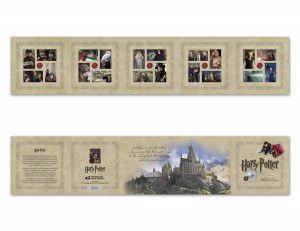 A story appeared in the November 18, 2013 edition of The Washington Post that the hard-core stamp collectors, the ones that will buy the products released by the United States Postal Service, are apoplectic about selection of Harry Potter as a subject for a series of stamps.
A story appeared in the November 18, 2013 edition of The Washington Post that the hard-core stamp collectors, the ones that will buy the products released by the United States Postal Service, are apoplectic about selection of Harry Potter as a subject for a series of stamps.
The objections are two-fold. First, Harry Potter is not American and neither is the author of the series J.K. Rowling. The other reason is that the Postal Service bypassed the Citizens’ Stamp Advisory Committee (CSAC) to make the deal with the various commercial concerns to issue the 20-stamp tribute to the boy wizard.
Unlike the Citizens Coinage Advisory Committee, the CSAC is not mandated by law. It was established in 1957 “to select subjects of broad national interest for recommendation to the Postmaster General that is both interesting and educational.” Apparently, there has been tension between the Postal Service and the CSAC.
Like coin collecting, stamp collecting has been in decline as the awareness and usage of their product declines. Coin collectors can point to the decline in coin collecting following the big start of the 50 State Quarters® program, stamp collectors can point to the growth of email, e-publishing, and electronic stamp capabilities as part of the decline of the postal service. The Postal Service feels it has to do something in order to bring new collectors to buy its goods.
Unlike the U.S. Mint, whose products are very heavily regulated, the only regulation the Postal Service must meet is the price of postage. Once the postage rates are set, there are no laws or rules that govern how postage is demonstrated on the piece of mail. In fact, the Postal Service can print any stamp they want to honor any person, animal, object, historical incident, and even their own mistakes as they have by producing a tribute to the Inverted Jenny postage stamp, stamp collecting’s most famous error.The Postal Service has been an independent agency of the federal government since 1971. Their operating expenses largely come from the sale of postage and the collection of duties for cross-border movement of the mail. Other revenues are generated from the sales of collectibles including special sets, first-day covers, and other collectibles. Interesting items sell well including the Elvis Presley stamps which were the Postal Service’s bestseller.
One area of regulation that has hurt the Postal Service was a law passed in 2005 that forced the agency to pre-pay retirement benefits for the next 75-years in a series of very large lump-sum payments. Their inability to meet the obligation and maintain the 75-year cushion has been widely reported causing the agency to lose significant revenues while trying to adhere to this ridiculous statutory requirement. No other agency or company is required to pre-pay 75-years of retirement benefits.
Knowing that they have to generate new revenues, Postmaster General Patrick R. Donahoe was quoted as saying that the Postal Service “needs to change its focus toward stamps that are more commercial.”
In other words, Donahoe recognizes that the organization he leads has to think differently in order to attract new customers.
The reaction from the philately community is almost the same as I would expect from the numismatic community if this was done by the United States Mint.
This is not the case everywhere. Although there have been complaints about the Royal Canadian Mint’s expanded catalog, their products are selling and winning awards. Others complain about the blatant commercialism at the New Zealand Mint for partnering with commercial vendors to issue non-circulating legal tender coins with themes from Star Wars, Monopoly, and Dr. Who? Other than being expensive, is there really anything wrong with these offerings?Next year, the U.S. Mint will issue a curved coin to honor the National Baseball Hall of Fame. While it will be a round coin, the coin will be concave when looking at its obverse. While the closest thing to “different” the U.S. Mint has produced was the 2009 Ultra High Relief Gold Coin, the sales of the Baseball Hall of Fame Commemorative coins may do well because of the theme and they are different.
If the Baseball Hall of Fame Commemorative coins do sell well, will congress authorize other commemoratives that are not round and flat? Will congress allow the U.S. Mint to produce motorcycle or car-shaped coins? What about coins with commercial themes?“Harry Potter is not American. It’s foreign, and it’s so blatantly commercial it’s off the charts,” said John Hotchner who was once president of the American Philatelic Society and served on the CSAC for 12 years. Hotchner should be asked about the stamps to commemorate Pixar animation, Disney, and muscle cars. Even though I am a coin collector, I have bought the muscle car commemorative panel along with sheets of motorcycle stamps and a collector book with the stamp of Edgar Allen Poe because I was interested in the theme.
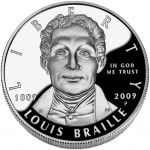
Louis Braille was not American nor did he do his work in America, but congress authorized a commemorative issued in 2009
Coin and stamp collectors have to take their heads out of the past. Stamps are losing to email and coins are losing to credit cards. Neither are going away anytime soon, but if there is to be a future both the U.S. Mint and U.S. Postal Service has to be innovative in order to attract new collectors. While the U.S. Mint is handcuffed by the whims of a dysfunctional congress, the Postal Service can capitalize on one of the most popular books and stories of this generation. If it helps promote stamp collecting and allows them to sell more products, then the Postmaster General should be congratulated for a job well done.
Maybe there is something that can be done to add to the catalog of the U.S. Mint in order to generate more interest. Until then, this muggle will be ordering something from the Harry Potter collectibles offered by the Postal Service for his wife who is a Harry Potter fanatic!
What do you think? Weigh in on the discussion in the comments (below).
- All stamp images courtesy of the United States Postal Service.
- Monopoly coin image courtesy of the New Zealand Mint.
- Louis Braille Commemorative image courtesy of the U.S. Mint.
- Somalia motorcycle coin images are courtesy of the author.
A solemn 50
It was the modern day “Shot heard ’round the world.” At 12:30 PM Central Time, while the motorcade carrying President John F. Kennedy, First Lady Jacqueline Kennedy, Texas Governor John Connally, and Connally’s wife Nellie was twice fired upon while passing through Dealey Plaza in Dallas. Lee Harvey Oswald fired two shots from the Texas School Book Repository at the convertible. The first shot hit the President under his arm which was held up as he waved at the crowd. The bullet passed through his body and struck Governor Connally. The second bullet struck the President in the head.
At 1:00 PM, President John Fitzgerald Kennedy was pronounced dead at Parkland Hospital.
Vice President Lyndon B. Johnson refused to leave Dallas for Washington without the Jacqueline Kennedy or the body of the president. At 2:38 PM, Johnson took the oath of office aboard Air Force One with Mrs. Kennedy at his side. She wore the blood-splattered coat to remind people of the tragedy that just occurred.
Fifty years later, those who experienced the assassination as part of the American family continues to remember the sadness and grieving by everyone, even those that did not support Kennedy. Some have described the feeling as more profound than what we experienced on September 11, 2001 because while both were tragedies, Kennedy was the living symbol of a bright future.
Sept. 12, 1962
Kennedy became the youngest person to ever be elected as President and the first Roman Catholic. At 43, Kennedy was the promise of a new vision that would have the United States leading the world in fighting the “common enemies of man: tyranny, poverty, disease, and war itself.” In his inaugural address, he called the nation to arms for its own sake when he said, “Ask not what your country can do for you, ask what you can do for your country.”
Kennedy made an impact on this country in such a short period of time that one can wonder what would have happened if….
 A few days after Kennedy’s assassination on November 22, 1963, U.S. Mint Director Eva Adams, Chief Engraver Gilroy Roberts reported that there was discussions about putting Kennedy’s portrait on a silver coin. Since Jacqueline Kennedy did not want to replace Washington’s portrait on the quarter, it was decided to use the half-dollar. Roberts used models from the inaugural medal for the obverse design and Assistant Engraver Frank Gasparro prepared the reverse design using the Presidential Seal.
A few days after Kennedy’s assassination on November 22, 1963, U.S. Mint Director Eva Adams, Chief Engraver Gilroy Roberts reported that there was discussions about putting Kennedy’s portrait on a silver coin. Since Jacqueline Kennedy did not want to replace Washington’s portrait on the quarter, it was decided to use the half-dollar. Roberts used models from the inaugural medal for the obverse design and Assistant Engraver Frank Gasparro prepared the reverse design using the Presidential Seal.
Since the law stated that coinage design could not be changed more often than 25 years, and that the Franklin Half was only 15 years old, it required Congress to authorize the change. The Act of December 30, 1963 allowed the design to be changed.
When the coin was released in 1964, the 90-percent silver coin was saved by a grieving nation wanting something that represented the fallen President. Over 273 million coins were struck in Philadelphia and 156 million in Denver. The composition was changed in 1965 with the introduction of clad coinage. Half-dollars consisted of 40-percent silver that included a core made from 79-percent copper and 21-percent silver. In 1971, the composition was changed to current copper-nickel clad that is in use today.
 There has been one design change to the coin and that occurred in 1975 and 1976 in honor of the American Revolution Bicentennial. A special reverse depicting Independence Hall in Philadelphia was designed by Seth G. Huntington. For both years, the obverse featured the dual date 1776-1976 in celebration.
There has been one design change to the coin and that occurred in 1975 and 1976 in honor of the American Revolution Bicentennial. A special reverse depicting Independence Hall in Philadelphia was designed by Seth G. Huntington. For both years, the obverse featured the dual date 1776-1976 in celebration.
On the 50th anniversary of his assassination, we salute President John Fitzgerald Kennedy for his service and mourn the loss to this country.

